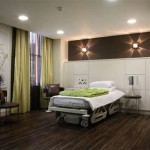Beautifully Decorated Family Rooms: Creating a Hub for Connection and Comfort
The family room, often referred to as the heart of the home, serves as a central gathering place for connection, relaxation, and shared experiences. Its design should reflect the personality and needs of the household, balancing aesthetic appeal with practicality and comfort. A beautifully decorated family room enhances the overall living experience, fostering a sense of belonging and creating a space where lasting memories are made. This article will explore key considerations in designing and decorating a family room to achieve both beauty and functionality.
Prioritizing Comfort and Functionality Through Thoughtful Layout
The layout of a family room is paramount to its success. A well-planned arrangement considers traffic flow, furniture placement, and the intended use of the space. Start by identifying the room's focal point, which could be a fireplace, a large window offering a scenic view, or a built-in entertainment center. Furniture should then be arranged to complement and highlight this focal point.
Consider the activities that will primarily take place in the family room. Will it be used mainly for watching television, playing games, reading, or engaging in conversation? The layout should facilitate these activities. For instance, if television viewing is a primary function, the seating should be positioned at a comfortable distance from the screen, minimizing glare and ensuring optimal viewing angles. If the room is also intended for conversation, arrange seating to encourage interaction, such as a grouping of sofas and armchairs facing each other.
Traffic flow is another critical factor. Ensure there are clear pathways throughout the room, allowing for easy movement between different areas and preventing obstructions. Avoid placing furniture in walkways or blocking doorways. This creates a space that feels open and inviting rather than cramped and cluttered.
The scale of the furniture should be appropriate for the size of the room. Overly large furniture can overwhelm a small space, while undersized pieces may get lost in a larger room. Consider using a mix of furniture sizes and shapes to create visual interest and a sense of balance. For example, a large sectional sofa can be paired with smaller armchairs and ottomans to create a comfortable and inviting seating area.
Finally, consider incorporating storage solutions into the layout. Built-in shelves, cabinets, or ottomans with storage compartments can help keep the room organized and clutter-free. This is especially important in family rooms, where toys, books, and other items tend to accumulate.
Selecting a Cohesive Color Palette and Materials
The color palette and choice of materials significantly influence the overall aesthetic of the family room. Choosing a cohesive color scheme that reflects the desired mood and style is essential. Consider the amount of natural light the room receives when selecting colors; darker colors can make a room feel smaller and more enclosed, while lighter colors can create a sense of openness and brightness.
Neutral colors, such as grays, beiges, and whites, are popular choices for family rooms because they provide a versatile backdrop for furniture and accessories. These colors can be easily complemented with pops of color through artwork, throw pillows, and other decorative elements. However, vibrant colors can also be used effectively in family rooms, especially in smaller doses, to add energy and personality to the space.
When choosing materials, prioritize durability and comfort. Family rooms are often high-traffic areas, so select materials that can withstand wear and tear. Flooring options such as hardwood, tile, or durable carpeting are practical choices. Hardwood floors offer a classic and timeless look, while tile is easy to clean and maintain. Carpeting can add warmth and softness to the room, but it's important to choose a stain-resistant and durable option.
Upholstery fabrics should also be chosen for their durability and comfort. Consider fabrics such as microfiber, leather, or performance fabrics that are resistant to stains and spills. These materials are easy to clean and maintain, making them ideal for family rooms. Texture is another important factor to consider when selecting materials. Mixing different textures, such as smooth leather with a soft knit throw, can add visual interest and depth to the room.
Lighting plays a crucial role in creating the desired ambiance. Layering different types of lighting, such as ambient, task, and accent lighting, can create a warm and inviting atmosphere. Ambient lighting provides overall illumination, while task lighting is used for specific activities, such as reading or working. Accent lighting highlights specific features of the room, such as artwork or architectural details. Dimmers can also be used to adjust the lighting levels to suit different moods and activities.
Incorporating Personal Touches and Meaningful Decor
To truly transform a family room into a space that reflects the personality and interests of the household, incorporating personal touches and meaningful décor is crucial. This involves selecting items that hold sentimental value, reflect the family's hobbies, or showcase their travels and experiences. These personal touches can make the room feel more inviting and create a sense of connection and belonging.
Artwork is a powerful way to add personality and style to the family room. Choose pieces that resonate with the family's taste and preferences, whether it's original paintings, prints, photographs, or sculptures. Artwork can also be used to tie together the color scheme of the room or to create a focal point. Consider displaying family photos in stylish frames to create a personal gallery wall. This allows the incorporation of cherished memories and adds a unique touch to the space.
Accessories, such as throw pillows, blankets, and decorative objects, can also be used to add personality and warmth to the room. Choose items that complement the overall design style and color palette. Mix and match different patterns and textures to create visual interest. Consider incorporating items that reflect the family's hobbies or interests, such as books, musical instruments, or sports memorabilia.
Plants can also bring life and vibrancy to the family room. Choose plants that are easy to care for and that thrive in the room's lighting conditions. Plants can help purify the air and create a more relaxing and inviting atmosphere. Consider using a variety of plant sizes and shapes to create visual interest.
Finally, remember to choose décor items that are both functional and beautiful. For example, a stylish coffee table can provide a surface for drinks and snacks, while also serving as a decorative element. A comfortable throw blanket can add warmth and coziness to the room, while also complementing the color scheme. By carefully selecting items that are both practical and visually appealing, it's possible to create a family room that is both beautiful and functional.
Ultimately, a beautifully decorated family room is one that seamlessly combines comfort, functionality, and personal style. Through careful planning, thoughtful material selection, and the integration of meaningful décor, it is possible to create a space that truly reflects the unique character of the family and serves as a welcoming hub for connection and relaxation.

78 Beautiful Living Room Ideas For A Timeless Look

78 Beautiful Living Room Ideas For A Timeless Look

100 Living Room Decorating Ideas Design Photos Of Family Rooms
:max_bytes(150000):strip_icc()/dream-kitchen-family-x-92bad4b9a67f461295d276cb0391053f.jpg?strip=all)
92 Living Room Decorating Ideas We Love

Bright White Living Room Decor Gold Designs

91 Best Living Room Ideas 2025 Beautiful

How To Decorate A Living Room 11 Designer Tips Houzz

18 Cozy Living Room Decor Ideas And Designer Examples

35 Best Living Room Decor Ideas Holiday Decorating

35 Best White Living Room Ideas For Decorating







